How to glue the toilet
When using home plumbing, there are frequent situations when, as a result of careless handling of a device, it suffers quite serious damage (chipping of a part of the body, for example). To eliminate the effects of such damage, you can resort to the repair of sanitary devices. In addition to a general acquaintance with the technique of repair, in this article you can learn about how to glue the toilet in case of breaking off a part of its body or the formation of a crack in it.
Immediately, we note that, despite a certain variety of materials used in the manufacture of sanitary appliances (porcelain, earthenware, etc.), they all belong to a more general category of ceramic products with universal performance characteristics. That is why the main task of our article is to get acquainted with well-known methods of gluing ceramics products.
What you need to repair
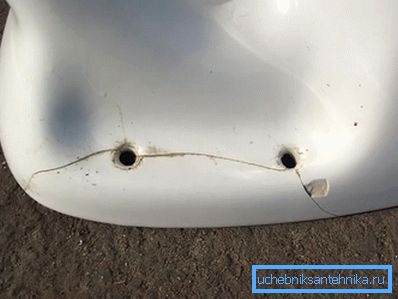
Before you glue the toilet, you will need to prepare the following tool and consumables:
- special repair glue;
- set of grinding skins;
- solvent;
- spatula suitable size;
- soft (preferably flannel) fabric;
- dryer for drying places gluing.
As a device for drying the glued zones, it is allowed to use a regular household hairdryer.

For the restoration of ceramic products, it is desirable to use adhesives of industrial production, which are commercially available in a wide range. At the same time, before the start of repair procedures, it is mandatory to make preliminary preparation of the surfaces to be joined for gluing.
Surface preparation
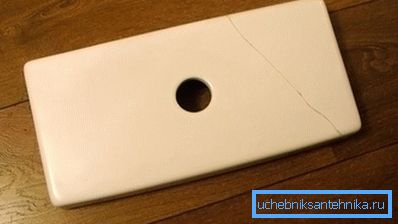
Regardless of the type of material from which the toilet is made (porcelain, earthenware, etc.), the surfaces of the parts to be glued must be carefully cleaned with fine-grained emery cloth and then completely degreased. Degreasing the areas to be glued, produced immediately before applying the adhesive composition. To do this, the surface is wiped with a soft flannel cloth (in order to remove residual sanding dust).
The order of gluing of separate fragments of a toilet bowl, as a rule, depends on the brand of adhesive material chosen by you.
The choice of adhesive
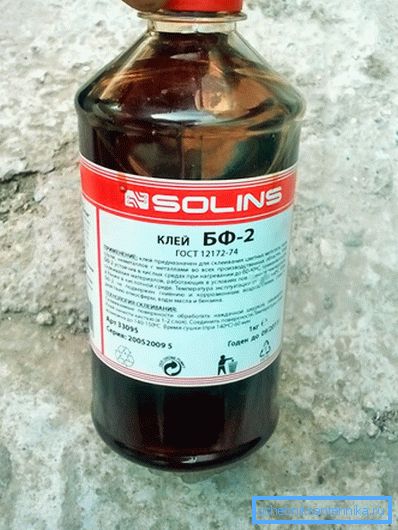
When choosing the adhesive composition, each performer must proceed from his own experience, taking into account the recommendations of specialists. For the repair of individual elements of the toilet bowl (for example, a cover), the use of so-called liquid nails is allowed.
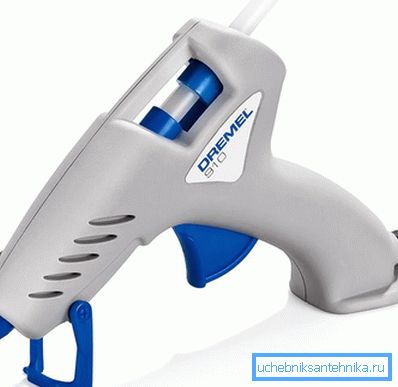
However, different compositions, which are commercially available in domestic markets, are considered more suitable for bonding ceramic products. The following options may be considered:
- The use of well-known to most users and well-proven adhesive BF-2.
- For gluing a toilet bowl or cistern, an epoxy resin may be suitable, which guarantees a reliable connection, but requires careful preparation of the working mixture.
- If it is necessary to glue the toilet seat, good results can be achieved with the use of “Rapid” or “Unicum” adhesives.

It should also be noted that on the basis of the material of liquid nails, if desired, it will be possible to make a high-quality adhesive mixture (with the addition of chalk powder and quicklime). When mixing the components of such glue, it is necessary to take into account that this composition “seizes” very quickly and it must be prepared in quantities sufficient for one gluing.
Gluing technique
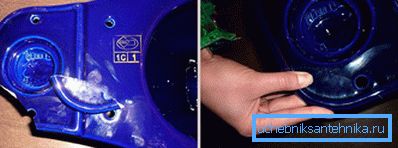
Glue should be applied to well-cleaned and degreased surfaces as follows: first, apply the first layer and make a short shutter speed, which is necessary to allow it to dry out. And only then the second layer of glue is applied, after which the parts to be glued are pressed tightly against one another and fixed in this state for a certain time (instructions on the exposure time can be found in the instructions for use). The excess glue formed during the compression of parts is removed by means of a cloth or a soft cloth.
After a dwell time (the period of which can be reduced by using a hair dryer), the resulting seam is treated with fine-grained sandpaper.
During the operation of the restored toilet, one should take into account the fact that the repaired sanitary device will no longer be so durable, which means only one thing - after some time it will still have to be replaced with a new one.
So, to glue the toilet without a specialist, you need to follow the above recommendations, namely, be patient, buy glue, clean and degrease the surface to be glued, and dry it. This task will cope every man who owns a standard tool.